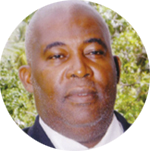
Teaching is much different now, from what it used to be fifty years ago. The main disciplinary problems in schools in St. Lucia were scuffles or short fights between students who were back on the playground playing marbles not too long after; in the case of the Marchand Combined School, now Bishop Charles Gachet Primary School, which I attended, students used to throw stones at the mangoes in a tree over-hanging the toilets; some physical and verbal exchanges; and students chewing gum in class, among other violations of the school rules.
Today’s offenses include, physical and verbal violence, frequent disobedience, bringing weapons and drugs to school, robbery and assault.
Indeed, often times, in the earlier years, there were disagreements rather than calculated assaults or violence.
Now where does school violence get its influence?
Violence among young people in our communities are moving at an alarming rate. It is not unusual to heart of a homicide when you rise in the morning. The reports come in sometimes on consecutive days.
The changing patters of family and community life also have their influence on school violence. Children are now more isolated from parents, extended family members, and other adults than ever before. Divorce, abuse, poverty, drugs and other forces that interfere with healthy parenting disrupt many families today.
As violence increases today, pressure for safe and orderly schools increases. Schools are struggling with what to do.
Now, what are some of the risk factors that can make a child or student violent:
(1)Poor academic performance, (2)Prior history of violence, (3)Hyperactive or impulsive students, (4)Mental Health condition, (5)Witnessing or being a victim violence, (6)Alcohol, drugs, or tobacco use, (7)Domestic Violence or abuse, (8)delinquent peers or friends, (9)Easy access to weapons, (10)Poverty in the family.
Indeed, as an educator who has served in the St. Lucia Education System for more than four decades, and a parent, I wish to offer some suggestions to make our schools a safe place for students, teachers, parents and members of the pubic.
I wish to propose the following:
(a) A national task force comprising of the police, educators, parents and members of the public be set up to investigate the serious problem of crime in our schools and communities. The task force should produce relevant data to support the violence and crime situation in St. Lucia, including schools.
We have been hearing that the issue of crime and violence is not just the concern of the police, but all of us who live in our “Fair Helen’ or out of it.
(b) Eliminate weapons brought to schools by installing metal detectors and conducting random searches of students.
One of my sons attended a secondary school in New York, the United Sates of America. Many times, I took the opportunity to go to the school with him on a school day. On entering the school, both of us were screen and searched for weapons, drugs and forbidden items. In fact, everyone who came
to the school had to go through the same process.
(c) Supress violent behaviour by asking the police to patrol schools and arrest students who are violating the law or behaving violently.
Now, if it means amending the laws of the land to allow police to carry out those functions, then this should be done as a matter of priority.
(d) Training of members of staff to recognize and intervene in violent situations.
I am quite aware of the cost involved in the pursuance of that proposal. However, the training could be done at the educational district level.
(e) Target students who commit regular acts of violence and using resources on the staff or district to modify their behaviour.
When I was in mainstream education, the Ministry of Education had begun the training of teachers in counselling, at least one per school. That would allow staff to quicky undertake that task before too late. I don’t know what obtains now with the training of counsellors.
(f) Schools should adopt a threat management policy that assures students that they will receive protection if they believe they are in danger.
(g) Provide debriefing sessions for students and family members traumatized by violent incidents.
When a violent incident occurs, several persons are traumatized or affected. Therefore, the debriefing session should be made available to everyone affected.
(h) Reach out to students, ancillary staff or other people at the school who seem to be angry or upset, or appear to be affected by violence.
(i) Work with families to help reduce the incidence of poverty.
School Violence can be traumatic for everyone; students, staff, family members and members of the various communities. It is important to take steps to prevent it since the entire nation will suffer, if it is not yet suffering from the present situation in our country.
In a subsequent articled I will propose several other things that could be done to prevent or eliminate violence and crime, and to halt the consequences that they can create.





